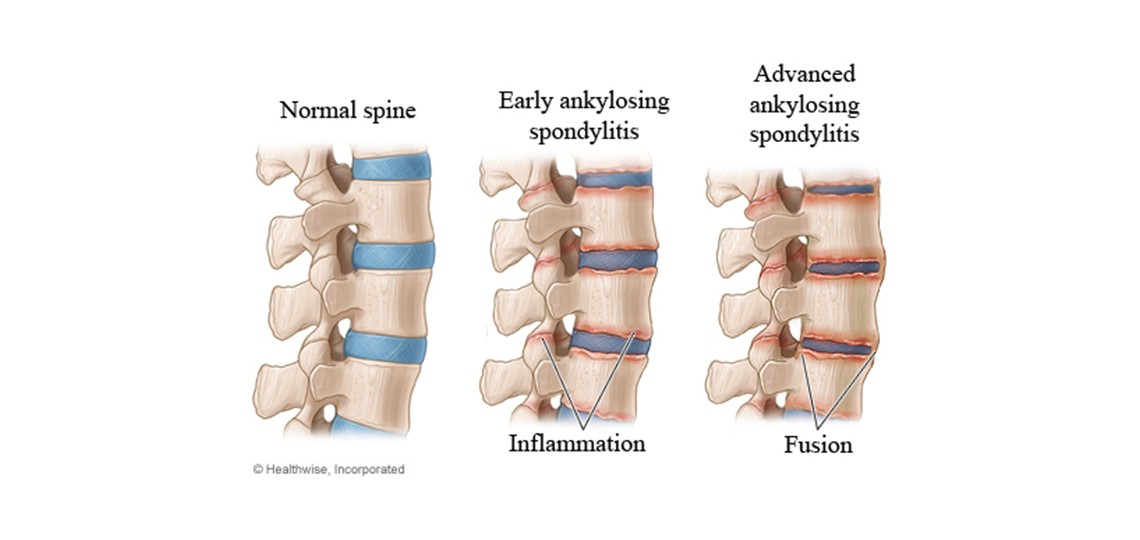About Ankylosing Spondylitis
Ankylosing spondylitis is a form of joint inflammation (arthritis) that is long-lasting (chronic) and most often affects the spine. Ankylosing spondylitis commonly causes pain and stiffness, with swelling and limited motion in the low back, middle back, neck, hips, chest wall, and heels.
Ankylosing spondylitis is a specific disease within a family of diseases called spondyloarthropathies. The cause of the disease is not known. In severe cases the affected joints in the spine fuse together. This causes severe stiffness in the back. Other joints can be stiff and painful, including those in the shoulders, wrists, hands, knees, ankles, and feet. Complications of ankylosing spondylitis may include inflammation of the colored part of the eye (iris), called iritis, or difficulty breathing due to curving of the upper body and stiffening of the chest wall. Inflammation from the condition may also affect the heart valves. In rare cases of severe disease, the artery called the aorta, the lungs, the kidneys, and the digestive tract can also be affected.
Ankylosing spondylitis usually affects people younger than about 35. It can run in families. And it is more common in men than in women.
About Psoriatic Arthritis
Psoriatic arthritis is a type of arthritis that sometimes occurs in people who have a skin problem called psoriasis. Arthritis causes joints to become swollen, tender, and painful.
Psoriatic arthritis is an autoimmune disease. That means the body's own defense (immune) system attacks the joints. An infection or a serious joint injury may trigger arthritis in people who have psoriasis.
© 2016-2020 Healthwise, Incorporated








 Credit
Credit
